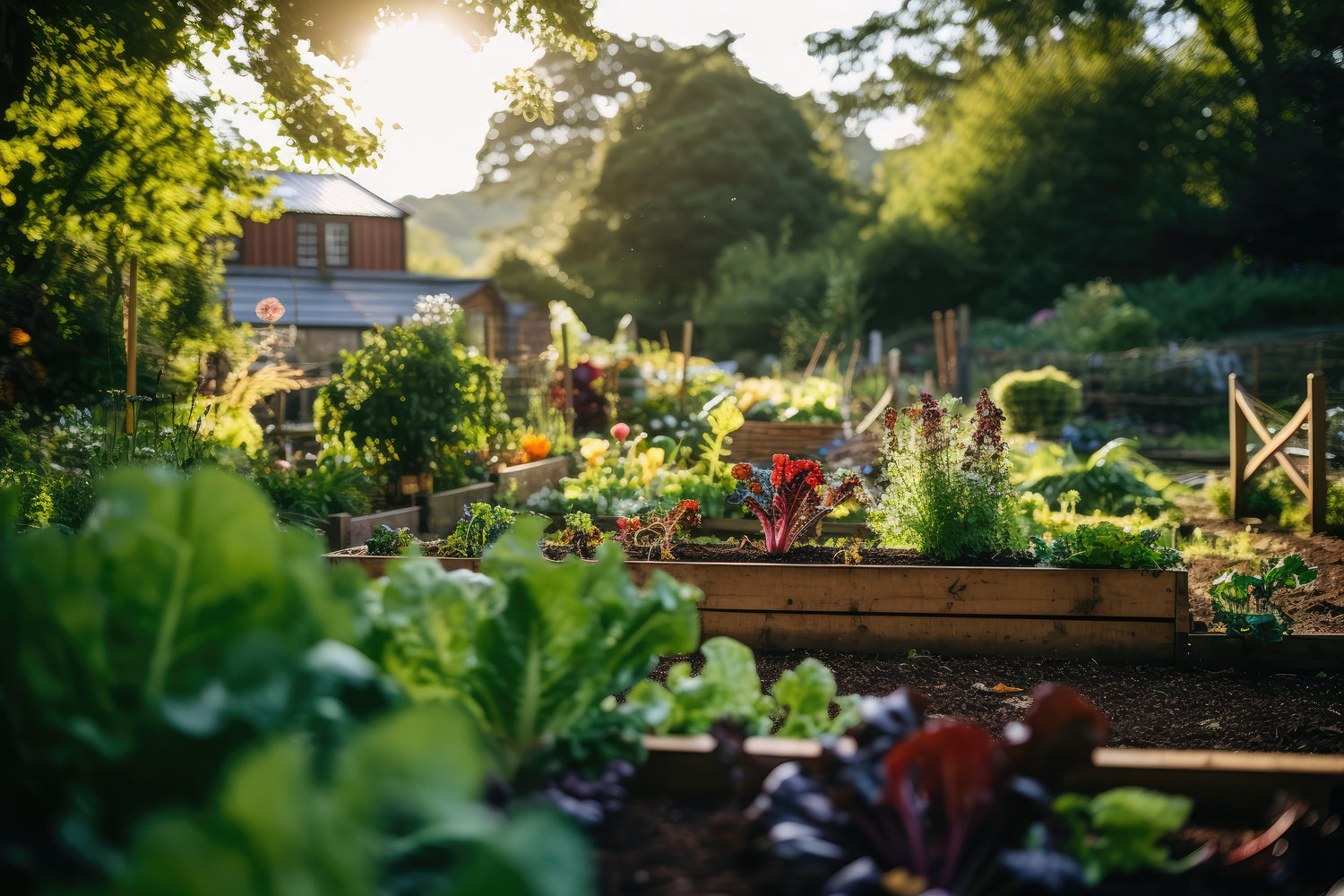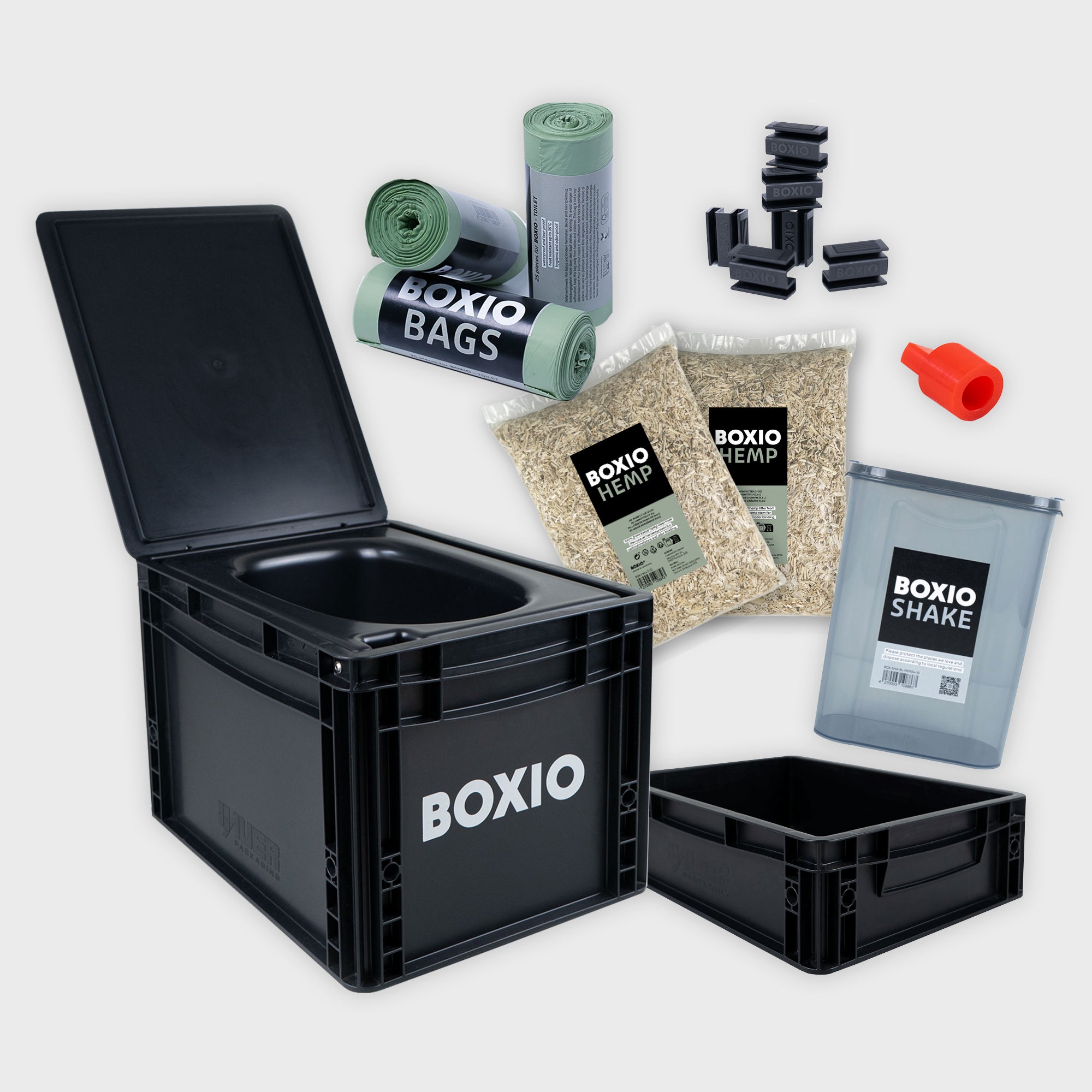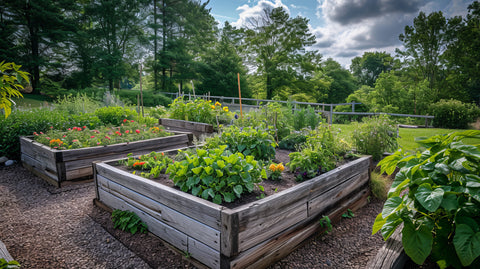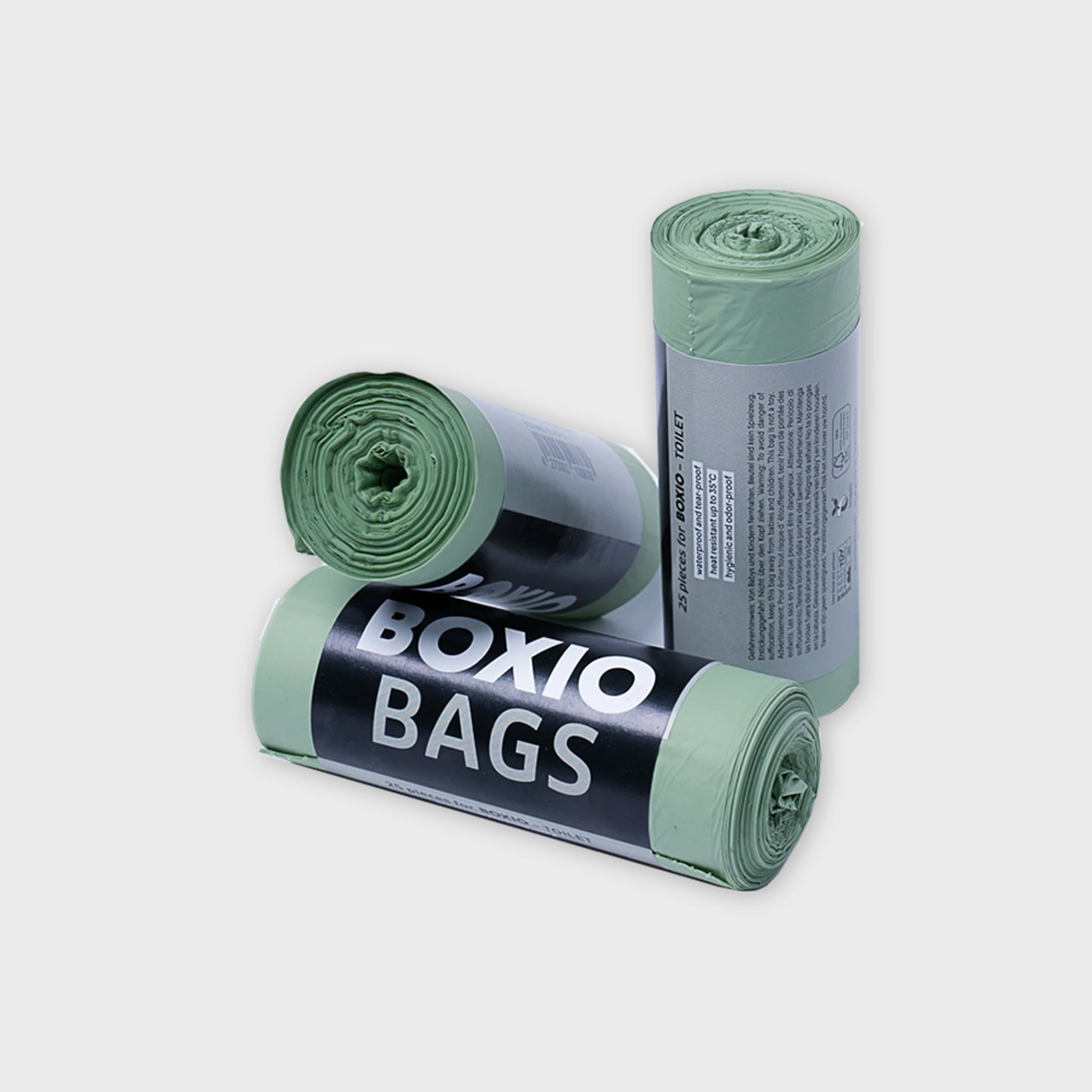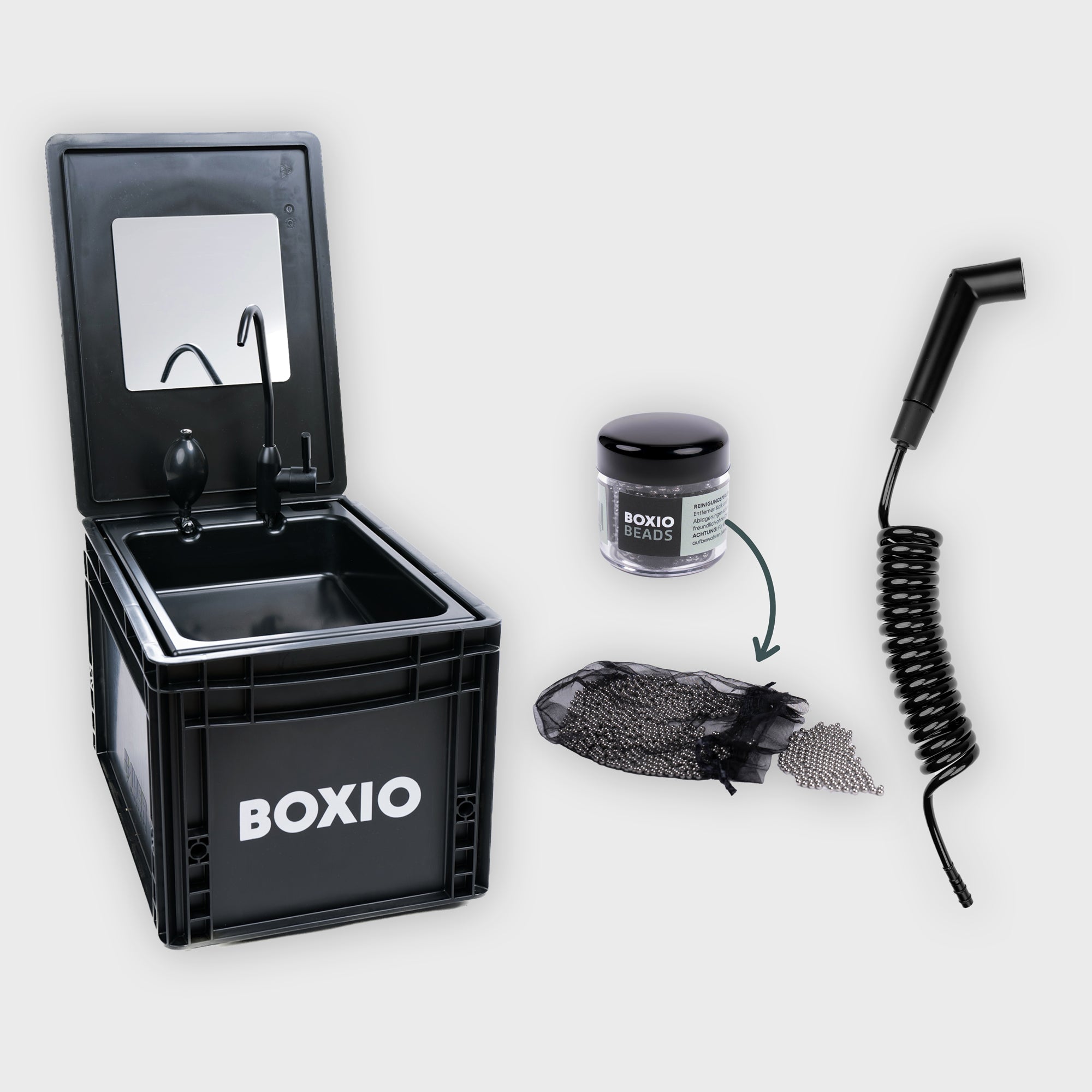Permaculture is on everyone's lips, but what is actually behind it? If you've already asked yourself the same thing, you've come to the right place. In this article we will give you an introduction to the world of permaculture and show you how you can create your own permaculture garden step by step. Let's get started right away!
What is permaculture?
Permaculture is a holistic design concept based on the idea of creating sustainable living spaces that are in harmony with nature. Developed in the 1970s by Bill Mollison and David Holmgren, permaculture brings together a variety of principles and techniques from diverse disciplines such as agriculture, ecology, architecture and social sciences.
At the heart of permaculture is the idea of working with nature rather than against it. This means observing and using natural processes and patterns to create diverse and stable ecosystems that can regulate and sustain themselves. Permaculture integrates various elements such as plants, animals, soil, water, energy and people in a harmonious interaction.
The goal of permaculture is to create sustainable living spaces that are ecologically, economically and socially viable. By applying permaculture principles, you can conserve resources, promote biodiversity, improve soil fertility and increase resilience to environmental changes. Permaculture is not just limited to agriculture, but can be applied to all aspects of human life, including architecture, energy, community development and personal lifestyle.
Not enough reasons for permaculture yet? Then feel free to take a look at this post. This is how permaculture works: create a little paradise for yourself! - Root system
Step 1: Soil Preparation and Planting
Healthy soil forms the foundation of any successful garden, especially in the context of permaculture. Instead of digging the soil extensively, you should carefully loosen it up with a digging fork. This does not disturb soil life, but rather supports it.
Compost beds are an indispensable part of a permaculture garden. They not only serve to improve soil fertility, but also provide the plants with a variety of nutrients. At the same time, they help to keep the soil moist and well ventilated. The organic materials in compost help maintain healthy soil life and promote sustainable plant health.
Step 2: Mulch
Mulching is a key practice in permaculture gardening that provides numerous benefits for soil health and plant growth. This method, which involves adding a thick layer of organic materials such as straw, leaves or grass clippings to the soil, is used to retain moisture in the soil, suppress weeds and promote soil life.
One of the main functions of mulching is to retain moisture in the soil. The mulch layer creates a barrier that prevents water from quickly escaping the soil through evaporation. This means the soil stays moist for longer, which is particularly important in dry climates or during dry periods in order to provide the plants with enough water.
Additionally, mulching helps suppress weeds by preventing weed seeds from germinating and hindering the growth of existing weeds. The mulch layer smothers the weeds and significantly reduces the amount of work required for weeding.
Step 3: Perennial plants and self-seeders
Perennial plants play an essential role in permaculture gardening as they require less care compared to annual plants and make the system more stable. These plants, which return year after year, provide numerous benefits to the garden by providing a continuous supply of food and habitat for animals and insects. Popular perennial plants include fruit and nut trees, berry bushes such as raspberries and currants, and perennial vegetables and herbs such as asparagus, artichokes and tarragon.
In addition, plants that self-sow are also an important component in the permaculture garden. These plants, such as wild rocket and dill, not only contribute to a constant supply of fresh greenery, but also promote natural reproduction and spread in the garden. Overall, perennial plants help improve soil fertility, promote biodiversity and make the ecosystem more resilient to environmental changes.
Step 4: Edible Ground Covers
Edible groundcovers are extremely versatile plants that perform a number of important functions in the permaculture garden. Not only do they cover the ground, but they also suppress weeds, improve soil structure, and at the same time provide food for humans and animals. These plants play a crucial role in creating a sustainable and productive ecosystem.
An example of an edible ground cover plant is the woodruff. This plant forms dense, green carpets and produces pretty white flowers in spring. In addition to its decorative effect, woodruff is also a valuable source of food for bees and other pollinating insects. In addition, woodruff can be used in many ways in the kitchen, for example for making syrup or as a delicious ingredient in desserts.
Another example of an edible ground cover plant is the nasturtium. This fast-growing plant produces large, bright orange flowers and can quickly cover large areas. Nasturtium is not only an attractive ornamental plant, but also a delicious and nutritious food source. Its flowers, leaves and seeds can be eaten raw or cooked and add a piquant note to salads, soups and other dishes.
Last but not least, wild strawberries are also excellent edible ground cover plants. These low-growing plants produce sweet, aromatic berries in spring and form dense carpets of green leaves. In addition to being a delicious treat for humans, wild strawberries are also a popular food source for birds and other wildlife. They can be eaten fresh or made into jams, sauces and desserts.
Step 5: Stacking Technique
The stacking technique is a central principle of permaculture that aims to arrange different elements such as vegetable beds, shrubs, trees and flowers so that they support each other and are used optimally. By vertically layering the plants and structures, the available space is used efficiently and the diversity in the garden is increased. This promotes biodiversity, improves soil fertility and increases the resilience of the ecosystem to environmental changes. Stacking technology is an essential part of permaculture to create sustainable and productive living spaces.
Here you can find out more about the different zones and how exactly you can use the stacking technique. Permaculture in the garden: Tips for creating a permanent culture (plantura.garden)
Step 6: Composting and using toilet waste
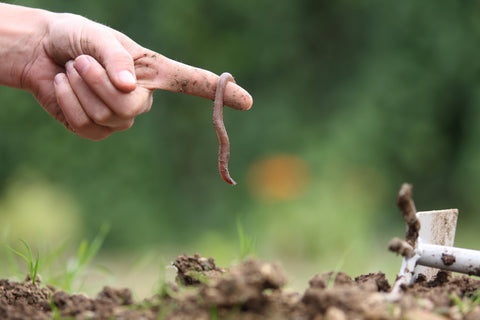
Composting is a central part of permaculture. By producing compost from organic waste, the soil is supplied with nutrients and the cycle is closed. It is important to use all available organic materials to produce high-quality compost.
In a permaculture garden, even the waste from Boxio dry separation toilets can be valuable. The innovative separation technology of these toilets separates urine from solid waste, resulting in reduced odor and better composting. The solid waste can then be processed into a high-quality compost along with other organic materials such as kitchen waste, garden waste and leaves.
Step 7: Create habitat for beneficial insects
Beneficial insects such as insects, birds and amphibians play a crucial role in permaculture gardens as they not only control pests but also maintain ecological balance and promote biodiversity. By specifically creating habitats such as piles of leaves, dry stone walls, piles of dead wood and insect hotels, beneficial insects can be encouraged in the garden.
Insects such as ladybirds, lacewings and parasitic wasps are natural enemies of many garden pests such as aphids, caterpillars and spider mites. By creating habitats that attract these beneficial insects, you can naturally aid pest control. Leaf piles provide shelter and food for numerous species of insects, while dry stone walls and piles of dead wood provide ideal habitats for many species of birds and amphibians.
Birds are also important beneficial insects in permaculture gardens as they feed on a variety of insects and thus contribute to natural pest control. Providing nesting boxes, bird baths and feeders can help attract birds to the garden and encourage their presence.
Amphibians such as frogs and toads are also valuable helpers in permaculture gardens as they feed on pests such as snails, insect larvae and mosquitoes. Creating wetlands, ponds and watering holes in the garden provides suitable habitat for amphibians and encourages their presence.
Conclusion
With these steps you will be well prepared to create your own permaculture garden and benefit from the numerous benefits of this sustainable farming method. By working with nature rather than against it, you can not only create a productive and diverse garden, but also contribute to environmental protection. If you are also interested in the topic of allotment gardens, please take a look at this article.
5 Ultimate Tips for Growing Your Vegetable Garden
And don't forget to integrate the Boxio mobile sink into your garden project to conserve resources and minimize environmental impact. Get your shovel and have fun gardening!
Your Boxio team


